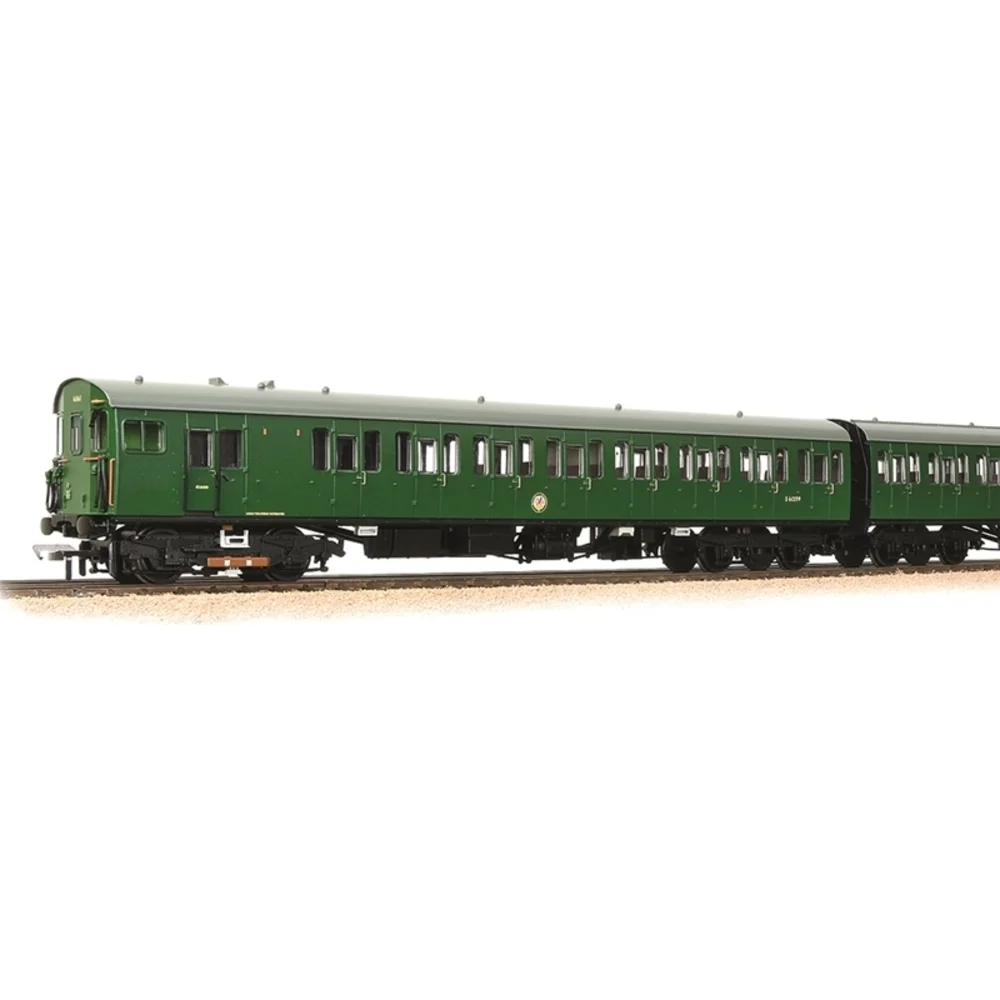Bachmann 31-390
British Rail Class 414 6061 British Railways Green with Late Crest
Class & Prototype
- Class: British Rail Class 414
- Traction: Electric Multiple Unit
- Built: 1956-1963
- Total Built: 209
The BR Class 414, known as the "2HAP" (2-car Half lavatory electro-Pneumatic), were pioneering electric multiple units that served Southern Region from 1956-1995. Built at Eastleigh Works in four batches totalling 209 units, these elegant two-car EMUs featured Britain's first production electro-pneumatic braking system, enabling 90mph express operation and sophisticated multiple working capabilities.
Distinguished by their Mark 1 coach profiles and characteristic "slam-door" design, the Class 414 units provided dual-class accommodation with 19 first-class compartment seats and 134 second-class saloon seats, plus lavatory facilities. Powered by twin EE507 traction motors producing 1,250hp, they formed the backbone of Kent Coast electrification services, working everything from London-Dover expresses to rural branch shuttles.
The class adapted throughout its 39-year career, serving through BR green, blue/grey, and Network SouthEast liveries whilst maintaining exceptional reliability. Technical innovations including electro-pneumatic braking and advanced control systems influenced British EMU design for decades. Today, unit 4308 survives in preservation at the Science Museum, whilst excellent Bachmann OO gauge models in multiple liveries enable authentic recreation of Southern electric operations for railway modellers and enthusiasts.
No prototype found.
Operator & Livery
- Operator: British Railways
- Livery: Green with Late Crest
British Railways transformed Britain's fragmented rail network into a unified national system following nationalisation on 1st January 1948. Created from the "Big Four" companies under the Transport Act 1947, BR operated most of Great Britain's railways until rebranding as British Rail in 1965, managing over 20,000 route miles and inheriting nearly 20,000 locomotives of diverse designs.
The organisation pioneered standardisation through its revolutionary BR Standard locomotive programme (1951-1960), producing 999 advanced steam engines under Robert Riddles' direction. These included the versatile Britannia Pacifics, mighty 9F freight engines, and mixed-traffic classes that incorporated the best features from all predecessor companies. The 1955 Modernisation Plan accelerated diesel and electric traction development, creating fascinating mixed-traction operations.
Notable achievements included establishing unified locomotive classification systems, introducing distinctive corporate liveries, and managing the complex transition from steam to modern traction. BR's six regional structure preserved operational diversity whilst enabling standardisation of practices, signalling, and rolling stock that had eluded private enterprise for over a century.
The BR era represents steam traction's final flowering alongside emerging diesel technology, creating unparalleled locomotive variety. Today, this heritage remains highly popular with railway enthusiasts through extensive preserved fleets, heritage railway operations, and comprehensive model ranges from manufacturers like Hornby, Bachmann, and Dapol, making BR subjects essential for authentic post-war British railway modelling across all scales.
